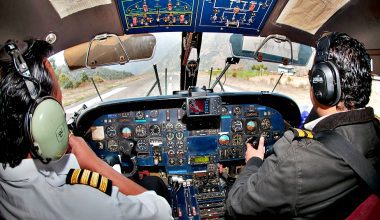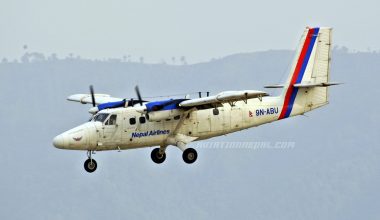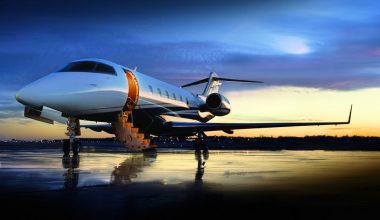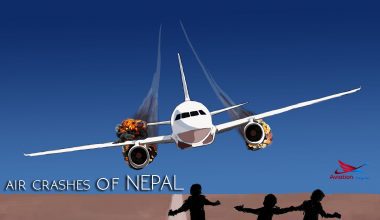Have you ever thought that a plane have to go through various tests before it really becomes acceptable for its continuous operation. Generally, we think it is just manufacturing process that gets complicated and after some test flights it will be acceptable for its operation. Well that’s not all an aircraft goes through. There are some extreme tests a plane goes through before it is delivered to an airline. Skilled pilots spend hours in the sky and on the runway putting planes through a whole range of jaw-dropping tests. Here we’ll look at the most thrilling and sensational tests that an aircraft goes through before being sold to airlines.
Rejected Take-off (RTO) test
A Rejected take-off (RTO) test is one of the hardest tests an aircraft has to undergo before getting its certification trials. This test is performed under very worst conditions like with fully worn out brakes, plane loaded with maximum takeoff weight and ban in use of thrust reversers.
During the test most of kinetic energy in an aircraft is converted to heat by the brakes which may cause the fusible wheel plugs to melt – and then the wheels themselves to deflate. Small brake fires are acceptable as long as they do not spread to the airplane body within five minutes (the maximum likely time for arrival of airport fire fighters).
Dragging tail on runway
This is a difficult maneuver for the pilots to perform. Essentially the plane travels at a lower-than-expected speed along the runway, so that the plane’s tail scrapes on the tarmac. It allows the pilot to determine the minimum aircraft speed required for takeoff in various configurations.
Captain Mark Feuerstein, who is a 747 test pilot, said: ‘It’s a balance between being forceful and gentle. But of course we want to be very gentle when we set the airplane’s tail down on the runway.’
Stall testing
One of the more terrifying tests a plane will have to go through is a mid-air stall test. The slower an airplane goes, the more angle of attack it needs to produce lift equal to the aircraft’s weight. As the speed slows further, at some point this angle will be equal to the critical (stall) angle of attack.
Frank Santoni, chief pilot of commercial planes for Boeing Test & Evaluation said: ‘You actually slow the airplane down in flight, so slow that the wing stops flying and that’s called a stall – where you don’t have enough air on the wing to produce lift and then the airplane will cease flying. If you do this with the wing “clean” (with the flaps up and in cruise position), you get a lot of natural buffet on the wings so the airplane shakes pretty dramatically – and that lets the pilot know you’re stalling and shouldn’t be there.’
Extreme weather testing
In this test, Planes are flown and taxied in extreme weather conditions as part of the comprehensive testing program. Planes are also put through their paces in high and low temperatures and in snow, wind and rain so as to make sure engines, materials and controls work correctly at all times. Aircraft are also flown at high altitude and low to the ground.
Airbus demonstrated weather testing to the extreme by flying continuously at Iqaluit, Canada. Temperatures reached an extremely frigid -28 degrees Celsius. It also performed a local flight as planned.
Fatigue testing
Fatigue testing examines how the aircraft structure responds to stress over a long period of time and during different stages of its operations, such as taxiing on the runway, take-off, cruising and landing. During this test, plane is placed in what looks like a construction site, and pressure and strain is exerted on every aspect of the body. The plane is stretched, bent and pressured to re-enact the demands of air travel.
Such condition is recreated by combining loads that are placed on the airframe and are activated by computer operated hydraulics. The wings of the aircraft are usually bent to 90 degrees. This helps manufacturers estimate durability of material and life-expectancy.
Water ingestion test
This test examines how the aircraft would behave on a very rain-soaked runway, and verifies that neither the water under the aircraft nor the spray generated by the nose landing gear will enter the engines. A ‘water trough’ is created on the runway’s surface, with rubber strips inserted in the grooves to retain the water. This pool will often be 350ft long and 100ft wide. Planes land on runways filled with lots of water to ensure controls, materials and brakes work correctly.
Bird strike test
Bird strike is common problem for aircraft. Though planes are built to withstand a bird strike – but damage is still done to the body. A chicken gun which is a large-diameter, compressed-air cannon is used to test the strength of aircraft windshields and the safety of jet engines by simulating high-speed bird impacts. In the test, bird carcasses are fired from a sort of chicken-cannon to test the resistance of windshields, intakes, and so forth.
Lightning test
Lightning is natural phenomenon and aircrafts does operate during extreme lightning weather. In an average year any given airliner can expect to be struck at least once on its travels. To operate in such condition aircrafts have to go through this test.
The fuselage of most planes is made of conductive aluminum, their presence in storm clouds, where huge amounts of static electricity gather, can actually trigger the discharges. But due to strict regulations, all passenger planes must be built with electrical shielding which protects the inside of the plane from the effects of lightning bolts.
During the test, ‘lightning lab’ scientists’ fire bolts of electricity at the materials used to construct the body of the aircraft. But placed in the carbon fiber is a layer of metal that reduces damage and is known as the ‘lightning protection.’






